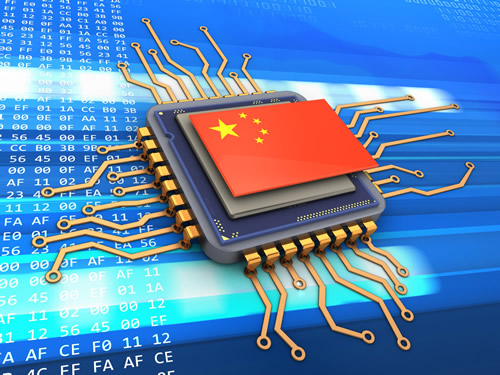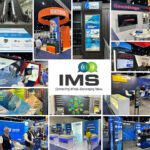The Rise of Asian Connector Manufacturers
The Chinese market’s growth over the past decade has been phenomenal. What does the future hold?

As of the end of August 2017, global sales of connectors are up over 10%, with Bishop & Associates forecasting 7.1% growth for the full year. While sales of connector manufacturers based in North America are projected to grow a little over 5% in 2017, sales of Chinese and Japanese connector companies are forecast to grow 10.3% and 8.3% respectively. It is interesting to see how Asian suppliers have moved up in the list of top 10 global connector manufacturers based on total sales. In 1998, the list was dominated by U.S. manufacturers.
- TE Connectivity
- FCI
- Molex
- Amphenol
- Thomas & Betts
- 3M
- Yazaki
- Hirose
- Foxconn
- JST
By 2016, U.S. connector manufacturers continued to hold the top four slots, but the number of Asian manufacturers with top 10 supplier ranking has dramatically increased.
- TE Connectivity
- Amphenol
- Molex Incorporated
- Delphi Connection Systems
- Yazaki
- Foxconn (FIT)
- JAE
- Luxshare
- JST
- Hirose
Beyond the top 10, there are many more Asian suppliers that fall into the top 100 suppliers. Similar to domestic connector suppliers, the list of Asian suppliers is dominated by a few large companies and many smaller firms. An Asian connector manufacturer may specialize in supporting a specific industry. Yazaki, for instance, focuses much of its product line on automotive connectors. Many Asian connector manufacturers concentrate on low-cost commodity interfaces, but others, such as Yamaichi, have developed state-of-the-art I/O such as CFP8 optical transceiver components. In some cases, a manufacturer may literally work out of a garage to build one type of connector or cable assembly for a single local customer. Foxconn Interconnect Technologies (FIT) offers a broad range of traditional connectors and continues to expand with its acquisition of optical modules from Avago. FIT was recently named as one of only two suppliers of Intel ChipConnect cable assemblies, a state-of-the-art interconnect.Growth of the Chinese connector market has been phenomenal, with 2016 sales growth of 11.9%. China’s market share grew from 19.1% of the total world market in 1998 to 30.4% by 2016.
There are a number of good reasons why Asian connector companies are growing so rapidly, not the least of which is the massive transition of electronic manufacturing to Asia. The rise of huge electronics manufacturing service (EMS) providers such as Celestica, Foxconn, Jabil, and Sanmina has created a manufacturing powerhouse unmatched anywhere in the world. Employing literally millions of assembly workers, China has become the largest manufacturer and consumer of electronic components. The resulting creation of the world-class component supply chain provides local stocking and just-in-time delivery at the lowest landed cost.
Responding to this migration, U.S. connector manufacturers both large and small have adapted by moving a large percentage of connector manufacturing to Asia. Over the past few years, large U.S. manufacturers have been relocating both engineering and marketing personnel to Asia in order to provide more local support. Connector manufacturers based in Asia have a significant advantage in dealing with local culture, customs, and language issues.
Years ago, the product lines of Asian connector manufacturers were focused primarily on commodity products such as USB, RJ-45, and D-shell connectors. As manufacturing of more advanced interfaces moved to Asia, the technology associated with the design and manufacturing of more sophisticated connectors also transferred, allowing local suppliers to design and offer competitive connectors. Today, for instance, PCB manufacturers based in Japan and China are able to build multilayer backplanes with layer count, line definition, and tolerances competitive with suppliers anywhere in the world.
One of the primary incentives for manufacturing electronic devices in Asia has been significantly lower labor costs. China, in particular, saw electronic assembly as a way to provide jobs to millions of available workers who otherwise would be planting rice. Entire cities have blossomed around EMS factories, enabling people to develop skills and generate reliable income. With government support, manufacturers in China dominate the flat-panel display and solar panel markets. Recognizing the danger in being dependent on foreign sources for critical components, the Chinese government is promoting increased vertical integration by developing its own semiconductor industry as well as access to critical materials. The Chinese recently claimed the title for world’s fastest supercomputer, built in China without the use of Intel processors.
It is hard to predict how this scenario will play out over the next 10 years, but nothing stays static. Will electronic assembly continue to migrate to other parts of the world as labor costs in China rise? Disruption of traditional family structures has already resulted in social issues. Vietnam is often mentioned as a possible successor, and it is already supplementing its growing clothing industry with electronics manufacturing.
Another possibility is that the expansion of automation in the assembly of electronic connectors will reduce the cost impact of human labor. Assembly of connectors would be a natural application for robotics, with the advantages of fixed assembly cost, improved quality, as well as the ability to quickly make product adaptations. Robotic assembly can be installed anywhere in the world to satisfy local demand. FIT has already made major investments in robotic assembly equipment, and is planning more. The company recently announced its intention to build a flat-panel display factory in Wisconsin. This will be an interesting test of the ability to build a price-sensitive, high-volume product in a state with relatively high labor costs.
Electronic connector manufacturers based in Asia have demonstrated remarkable ability to learn, adapt, and grow their business. The future will tell if that growth continues or if automation will flatten the global component playing field.
 Bishop and Associates has just released a new 10-chapter market research report providing a complete analysis of the World’s Top 100 Electronic Connector Manufacturers. Report Number: M-121-17 furnishes detailed statistics that benchmark the leading connector manufacturers by 2015/2016 total sales, sales by end-use equipment market, sales by product category, and many other key industry measurements. Visit store.bishopinc.com to preview and order a copy of this new report.
Bishop and Associates has just released a new 10-chapter market research report providing a complete analysis of the World’s Top 100 Electronic Connector Manufacturers. Report Number: M-121-17 furnishes detailed statistics that benchmark the leading connector manufacturers by 2015/2016 total sales, sales by end-use equipment market, sales by product category, and many other key industry measurements. Visit store.bishopinc.com to preview and order a copy of this new report.
- Optics Outpace Copper at OFC 2024 - April 16, 2024
- Digital Lighting Enhances your Theatrical Experience - March 5, 2024
- DesignCon 2024 in Review - February 13, 2024





